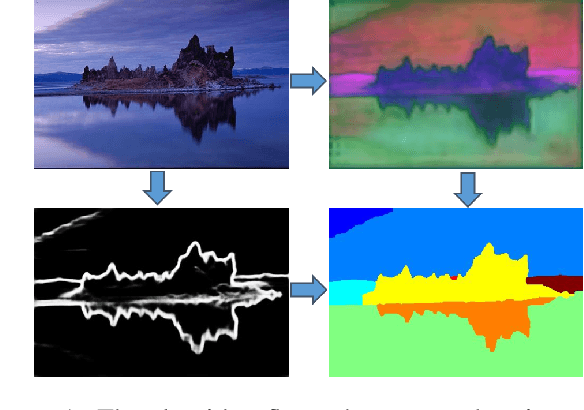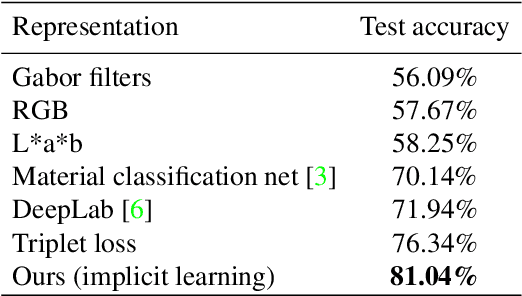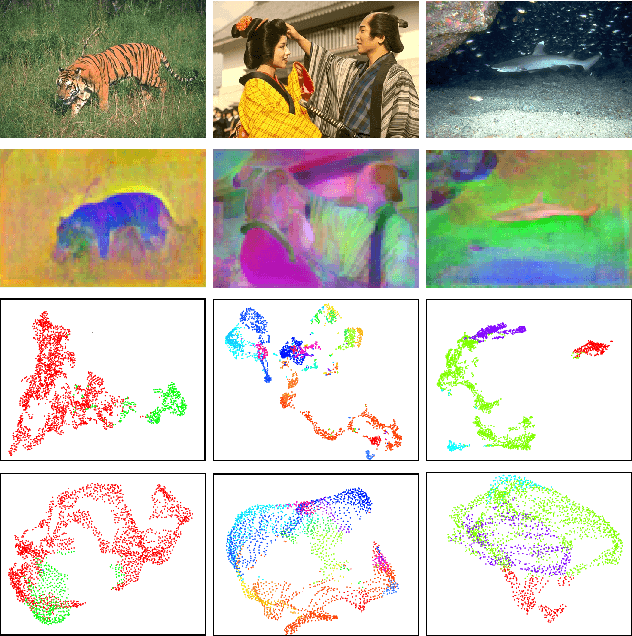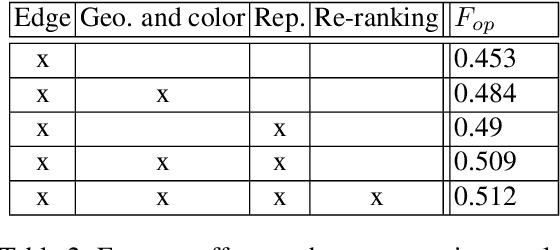Enhancing Generic Segmentation with Learned Region Representations
Paper and Code
Nov 17, 2019



Current successful approaches for generic (non-semantic) segmentation rely mostly on edge detection and have leveraged the strengths of deep learning mainly by improving the edge detection stage in the algorithmic pipeline. This is in contrast to semantic and instance segmentation, where deep learning has made a dramatic affect and DNNs are applied directly to generate pixel-wise segment representations. We propose a new method for learning a pixelwise representation that reflects segment relatedness. This representation is combined with an edge map to yield a new segmentation algorithm. We show that the representations themselves achieve state-of-the-art segment similarity scores. Moreover, the proposed, combined segmentation algorithm provides results that are either the state of the art or improve it, for most quality measures.
 Add to Chrome
Add to Chrome Add to Firefox
Add to Firefox Add to Edge
Add to Edge